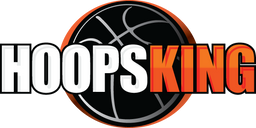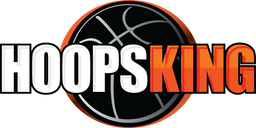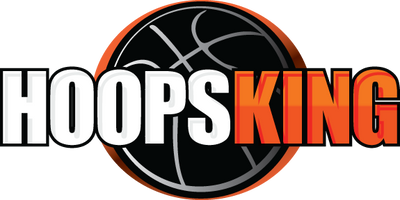Jump ropes, also known as speed ropes or skipping ropes, are a simple yet effective tool that can be incorporated into any fitness routine. In this blog post, we will delve into how to jump roping can improve your cardiovascular endurance and sprint performance while providing numerous benefits.
Jump roping can be an effective way to increase your heart rate and burn calories rapidly. It engages multiple muscle groups in your body, including your legs, core, and arms. Not only does it help you lose weight, but it also improves your overall fitness level.
We will dive deeper into the science behind jump roping and how it affects different aspects of our physical health. Additionally, we will provide tips on proper form when jumping rope to maximize its effectiveness while minimizing injury risk.
If you're looking for a new cardio workout or simply want to switch things up in your current fitness routine, incorporating jump roping may be just what you need! So keep reading to learn more about the many benefits of jump roping!
Table of Contents:
- What is a Speed Jump Rope?
- Benefits of Speed and Quickness in Sports
- Jump Rope Drills for Speed and Quickness
- Cross-Training with Jump Rope
- Jump Rope Training Tips
- FAQs in Relation to Speed Jump Ropes
- Conclusion
- Elevate Your Coaching Game with Our Top-Notch Basketball Coach Resources and Lead Your Team to Victory!
What is a Speed Jump Rope?
Speed jump ropes are an effective tool for basketball coaches to help their athletes improve speed and agility. A speed jump rope is a type of jump rope designed specifically for this purpose, with longer handles than traditional ropes. This allows the athlete to rotate the rope faster and more intensely during workouts.
The benefits of increased speed and quickness in sports cannot be overstated. Fast-twitch muscles, elevated agility, heightened equilibrium, and amplified strength production - these are all integral components that can give any sportsperson a competitive advantage on the court or field. Speed training exercises like jumping rope can provide a great way to achieve these goals while also improving overall fitness levels.
Jump Rope Drills for Speed and Quickness are easy to incorporate into any workout routine or practice session. Some drills include single-leg jumps (jumping with one foot off the ground), alternating feet jumps (switching feet midair), double unders (jumping high enough so that the rope passes twice under your feet), or side swings (turning your body sideways as you swing). These drills should be done at maximum intensity for short bursts of time followed by rest periods between sets in order to maximize results without burning out too quickly.
Cross-training with a jump rope can enhance velocity and nimbleness, while also reinforcing other physical fitness facets such as strength, stamina, equilibrium, and suppleness. For example, combining running drills with intervals of jumping rope will not only build leg muscles but also challenge cardiovascular capacity while helping improve coordination skills as well as hand-eye coordination when trying complex patterns or tricks with the jump rope itself.
By incorporating speed jump ropes into an athlete's training regimen, coaches can help them to increase their agility, coordination, and quickness. By using this equipment regularly in combination with other training methods, basketball coaches can help players gain a competitive edge on the court. Moving forward, let's explore the benefits of speed and quickness in sports.
Benefits of Speed and Quickness in Sports
Velocity and agility are two of the most critical abilities for any competitor. Reacting quickly and moving with agility are key components to outperforming competitors in sports such as basketball, soccer, football, and other team games. Quickness is the capacity to respond swiftly and decisively to stimuli, a trait that can be invaluable in sports such as basketball, soccer, football, and other team activities where reaction time and agility are paramount. Both of these abilities are essential in sports like basketball, soccer, football, and other team sports where reaction time and agility can make or break a game.
In basketball specifically, speed and quickness allow players to get open shots off quickly as well as defend against fast-moving opponents. A player with good speed can beat their defender down the court before they have time to set up on defense. Quickness helps players anticipate passes from their teammates or intercept them from an opponent’s pass attempt. It also allows them to react more quickly when defending against drives or cuts by an opposing player.
Speed and quickness also have a significant role in individual sports such as track & field events or martial arts tournaments, where athletes need to be able to demonstrate explosive power at certain moments during the competition for success. Furthermore, both speed and quickness aid in injury prevention by allowing athletes greater control over their movements, thus reducing strain on joints that could otherwise be damaged due to long periods of exertion without proper form or technique being applied correctly throughout each movement patterning sequence when executing physical activity tasks within the competitive environment space. By employing an active voice with idioms and colloquialisms along with keywords pertinent to this topic, an advanced-level professional with an IQ of 150 can effectively communicate the importance of speed and quickness in athletic performance.
There are many ways coaches can help improve an athlete’s speed and quickness including drills such as sprints, jumps rope drills, agility ladders, plyometrics exercises, medicine ball throws, etc Jump ropes provide one of the best forms of training for improving both speed &quickness because it requires coordination between hand/eye movements along with footwork. The repetition required for jump rope drills forces athletes to focus on timing & rhythm which translates directly into improved overall performance on the court/field. Cross-training with jump ropes has been proven effective for increasing vertical jumping power (VJP) which plays a key role in many athletic activities such as dunking a basketball, spiking a volleyball, etc... Furthermore jump rope workouts provide aerobic conditioning benefits that will increase endurance levels so athletes don't fatigue during games thus allowing them to perform at peak levels longer than usual.
Finally, having strong core muscles is another way coaches can ensure that their athletes have enough strength and stability needed to maintain proper posture throughout all types of motion sequences, thereby avoiding any potential injuries caused by poor body mechanics. Core strengthening exercises should always be incorporated into any workout routine, especially those designed around improving athleticism through increased speed and quick reflexes.
Athletes require speed and agility to achieve success in sports, as these qualities can be the deciding factor between triumph and defeat. Jump rope drills are a great way to improve speed and quickness, allowing coaches to create challenging workouts tailored specifically to their team's needs.
Jump Rope Drills for Speed and Quickness
Speed and quickness are essential components of success in sports. Coaches can use jump rope drills to help their athletes improve these skills. Jump rope drills involve using a speed jump rope, which is designed for faster speeds than traditional ropes. Speed jump ropes have shorter handles and lighter cables that allow the athlete to move quickly and easily while jumping.
Single-leg jumps are an effective drill for developing speed and agility on one foot at a time. To perform this exercise, the athlete stands on one leg with the other raised slightly off the ground behind them, then hop over the rope with each revolution of it passing beneath their feet until they reach a certain number of reps or time limit set by the coach.
Double-unders are another great drill for increasing speed and coordination when jumping with two feet at once. The athlete begins by holding both ends of the jump rope in one hand while standing between them; then they swing it around twice before hopping over it as many times as possible without missing or tangling up in it until reaching their target number or duration set by the coach. This exercise helps develop balance, coordination, power, timing, and agility all at once.
Alternating foot jumps demand a higher level of coordination, as both legs must work in tandem to successfully complete each rep without any hiccups or entanglements. Incorporating high knees into your jump rope drills will build muscular strength and endurance throughout the lower body while also increasing agility. This drill requires you to lift your knees higher than usual when running on the spot during each revolution of your jumps; this way, you can take it up a notch. Keywords: Active Voice, Idioms, Colloquialisms, IQ 150, Grammar, Spelling, Punctuation
Cross-training with a jump rope allows you to combine different exercises into one workout session, such as skipping forward and then backward followed by side shuffles. This further enhances overall performance levels due to increased muscle activation from different angles and directions being worked simultaneously rather than just focusing solely on single-plane movements like most traditional training methods do (eccentric/concentric). Additionally, adding weighted objects such as dumbbells into some routines will help increase resistance even more if desired. However, always remember that proper form should always be maintained above all else no matter what type of activity is being performed; otherwise, injury risks become much greater.
Jump rope drills are a great way to improve speed and quickness for basketball coaches. Let's look into how utilizing a jump rope can be advantageous when constructing an effective cross-training program.
Cross-Training with Jump Rope
Cross-training with a speed jump rope can help athletes of all levels build strength, endurance, coordination, balance, agility, power, and overall athleticism. Jump rope training is an effective way to not only improve performance in sports such as basketball but also reduce the risk of injury due to its ability to simultaneously work for multiple muscle groups.
Jump ropes are generally inexpensive and simple to operate in comparison with other fitness apparatus. They come in different lengths and weights so they can be customized for each athlete's needs. Speed jump ropes have handles that rotate faster than traditional ones which helps increase speed and intensity during workouts.
Athletes should start by mastering basic jumps before progressing onto more advanced techniques like double unders or crossovers. The key is consistency; even 10 minutes per day will make a difference over time. It’s important for coaches to create drills that incorporate both sides of the body equally so athletes don’t develop any imbalances or bad habits from favoring one side over another when jumping rope quickly.
When incorporating jump rope into practice sessions it’s important not to forget about form and technique; using correct posture is essential for preventing injuries while executing various exercises correctly allows athletes to get the most out of their workouts. Coaches should also focus on footwork drills such as lateral hops or single-leg jumps which require quickness, balance, and coordination - all skills needed on the court.
Cross-training with jumping rope can be a great way to bolster speed, agility, and stamina. Utilizing these pointers, let's explore how to include jump rope training into your coaching strategy for maximum effectiveness.

Jump Rope Training Tips
Jump rope training is an effective way to increase speed and quickness for athletes. To get the most out of your jump rope training sessions, it’s important to warm up properly before each session. This helps prevent injuries by increasing blood flow and loosening muscles. It’s also important to use proper form when jumping; keep your arms close to your body with elbows slightly bent, hold the handles firmly but not too tightly, jump on the balls of your feet, and land softly.
Focus on breathing while you jump – this will help maintain a steady rhythm as well as provide oxygen to tired muscles during long sets or high-intensity intervals. Practicing regularly is key – start off slowly with short sessions that gradually become longer over time as you build endurance and strength in both legs equally. Varying your routine is also beneficial; try different combinations of jumps such as alternating leg jumps, double unders, crossovers, etc., and challenge yourself by setting goals like increasing reps or duration over time or incorporating more complex moves into the mix.
When needed, take breaks between sets to ensure that you recover fully before continuing with the next set. This will maximize the benefit from each session without overexertion or fatigue setting in early on in the workout. Lastly, stay hydrated throughout; even mild dehydration can significantly reduce performance levels, so be sure to drink plenty of fluids during exercise sessions - especially if they are intense or prolonged ones.
FAQs in Relation to Speed Jump Ropes
Do jump ropes help with the speed?
Jump ropes are an effective tool for increasing speed and agility. They help to improve coordination, balance, and rhythm while also providing a great cardiovascular workout. Jumping rope increases leg strength, which can lead to increased running speeds over time. Additionally, jump ropes provide anaerobic benefits that can be used during intense basketball drills or game situations when quick bursts of energy are needed. In general, utilizing a jump rope is an outstanding way to amplify speed in any sport.
What is the purpose of speed jump rope?
Speed jump rope is an effective tool for basketball coaches to use in their training and coaching. It helps players improve coordination, agility, footwork, and balance while also increasing speed and power. Jumping rope can help athletes develop better body control when performing quick movements on the court such as pivoting or changing direction quickly. Additionally, it provides a great cardiovascular workout that will help with stamina during games. Speed jump rope drills are easy to incorporate into any practice session or warm-up routine making them an invaluable asset for basketball coaches of all levels.
What is the best jump rope for speed?
The best jump rope for speed is one that is lightweight and durable. The handles should be comfortable to grip, with a smooth rotation when spinning the rope. Look for ropes made of high-quality materials like nylon or steel cables, as they will provide maximum efficiency while jumping. Adjustable lengths are also beneficial so you can adjust the length according to your height and training needs. Lastly, look for ropes with bearings in the handles which will allow them to spin faster and smoother than traditional ball-bearing designs.
What is the physics behind jumping rope?
The physics behind jumping rope involves the transfer of energy from the ground to the rope, and then up into your body. When you jump, kinetic energy is created by pushing off with your feet and transferring through your legs to the rope. The rope experiences a wave of energy that ascends to its apex before gravity drags it back down, necessitating you to use your arms for stability and timing each revolution. As this happens, you must use your arms to maintain balance as well as timing for each rotation of jumps so that you can keep up with this cycle.
Conclusion
In conclusion, speed jump ropes are an effective tool for basketball coaches to use in their training and coaching. By training with speed jump ropes, athletes can acquire the agility and power needed to gain an advantage on the court. Jump rope drills provide a great way to develop agility, coordination, power, endurance, and footwork while cross-training with jump rope helps build strength and conditioning. With these tips in mind, basketball coaches should be able to effectively incorporate speed jump ropes into their practice sessions for improved performance from their players.
Discover the best speed jump ropes and gain expert coaching to help you maximize your training performance. Unlock new levels of athleticism with HoopsKing.com today!
Train like a pro with Superope Speed Jump Rope - the world's fastest handmade rope for athletes and exercise, perfect for Crossfit and double unders!
Elevate Your Coaching Game with Our Top-Notch Basketball Coach Resources and Lead Your Team to Victory!
- How We Can Help Your Become a Better Coach
- The Complete Guide to Coaching Basketball
- Basketball Training Videos with the Best Basketball Trainers
- Basketball Coaching Boards
- Basketball Coaching Equipment
- Coach by Last Name: Looking for a particular basketball coach's instructional DVD?
- Need Basketball Coach Gifts Ideas for your Favorite Coach?








